Seed Saving: Annual Flowers
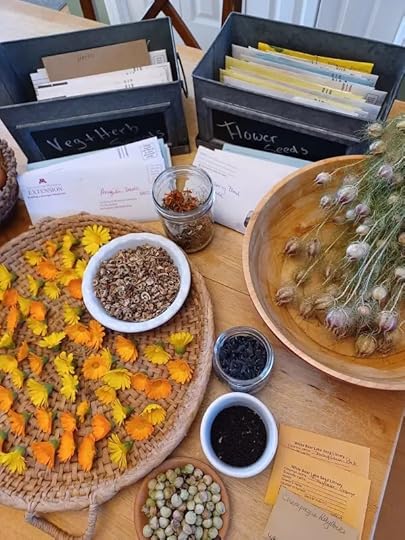
Seed Saving is something that has made me a better gardener in so many ways. It requires us to be more aware of how our plants are progressing through the season. It makes you see more than just the ‘product’ you’re growing- you see the plant as a self-sustaining entity. It can reproduce itself! For all these reasons and more, seed saving connects you to your garden in new and beautiful ways.
Did you know that saving annual flower seeds is a simple and cost-saving skill to master in your garden? It doesn’t require any special equipment and gives you another ‘harvest’ from your gardens.
Saving seeds is another way gardening helps us work closer with nature. And we need to really pay attention to nature as she moves through the seasons in order to save the best seeds. And being ‘in the moment’ in our gardens is one of things that brings us the most joy, isn’t it!?
So, I’m sharing my favorite annual flower seeds to save. The flowers listed also make amazing companion plants in any vegetable garden, along with adding color to the beautiful bouquets I get to bring inside all season…
More on these flowers as companion plants HERE.
Basics to Successful Seed Saving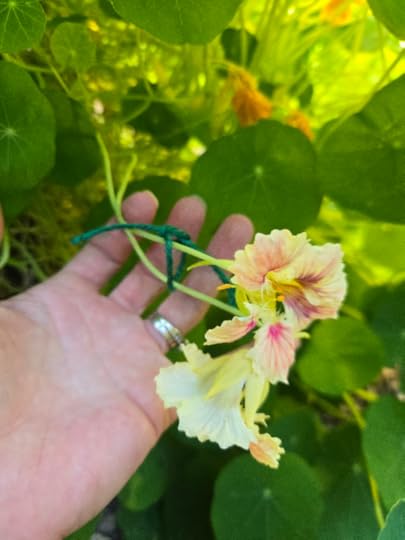 Start with the right seeds– grow open pollinated or heirloom varieties that will come back true to type. Saving seeds from hybrid plants will most likely not grow into the same plants (or flower/fruit) that they came from. More information on which are viable seeds to save HERE.Save seeds from the healthiest plants- Only save seeds from plants and fruits/veggies with traits you want to bring back (earlier, bigger, color, etc.).Mark specific blooms– as colors may fade before you can collect seed.Collect Seeds on dry days– wet seeds can mold when brought inside.Be patient– Saving seeds is mostly intuitive, but researching the specific seed maturity time of plants will help you gather the best seed.
Start with the right seeds– grow open pollinated or heirloom varieties that will come back true to type. Saving seeds from hybrid plants will most likely not grow into the same plants (or flower/fruit) that they came from. More information on which are viable seeds to save HERE.Save seeds from the healthiest plants- Only save seeds from plants and fruits/veggies with traits you want to bring back (earlier, bigger, color, etc.).Mark specific blooms– as colors may fade before you can collect seed.Collect Seeds on dry days– wet seeds can mold when brought inside.Be patient– Saving seeds is mostly intuitive, but researching the specific seed maturity time of plants will help you gather the best seed. Saving the best seeds means you’ll have the best luck germinating them next season.
My Favorite + Easiest Annual Flowers to Save SeedsFrom the well-loved marigolds and zinnias to nasturtium and calendula and so many more, let’s see what flowers you can bring back to your garden for FREE next year!
Since these flowers all bloom continually you can deadhead AND leave a few to fully mature into seeds throughout the season.
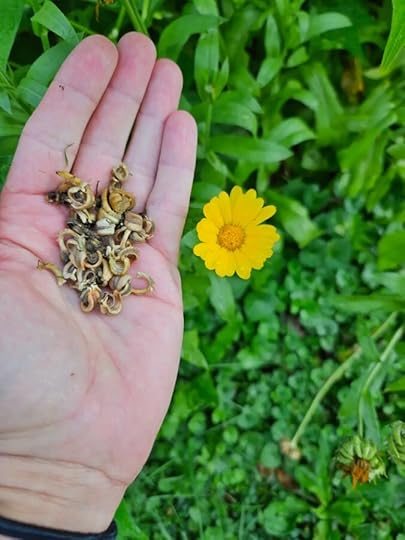 Calendula
CalendulaThese are also known as pot marigold and come in many shades and varieties. These seeds look like little aliens and very unlikely to sprout- but these beauties are easy to harvest and require very little cleaning. Waiting until the seed heads are fully brown and dried on the plant is key. They should basically fall off into your hands or collecting bowl.
Since these flowers bloom continually, you can deadhead- or leave a few to fully mature into seeds throughout the season.
*If you’re growing a few different varieties of calendula, note that they do cross-pollinate, which means that eventually you’ll have a
Viable for 3-6 years
CosmosI love the way these blow in the summer breeze and add such a variety of color to the vegetable garden and border. I find most of the varieties are hybrids, but sensation, radiance and candy stripe have all grown well from home saved seeds for me. Wait for the flower heads to dry completely on the plant, then rub between fingers into a bucket. Then blow away the extra fluff (chaff).
Marigold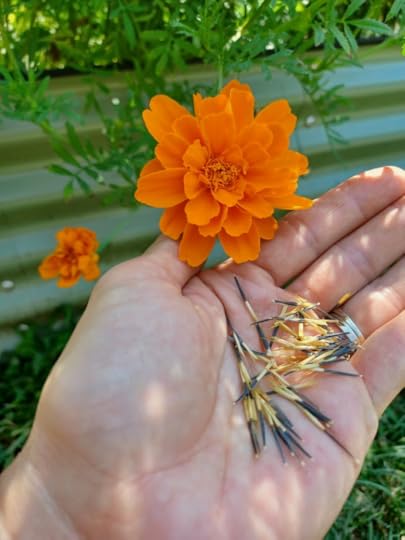
Oh, the marigold, is there any flower that is either loved or hated as intensely? I am a lover, for so many reasons. True marigolds are from the Tagetes family, and they offer a wide array of colors and sizes. I prefer the French marigolds for the full-sized blooms and large (3’x3’) plant size and lemon or tangerine gem for the smaller flowers and (1’x1’) plant size.
These seeds will dry on the plant and stay encapsulated in the involucre- how cool is that word- and that function!? So, they really stay all together until weather and time wear the papery seed package away- it falls to the soil and is ready to grow again. But- we get to play with these and pull them out of their packaging. We’re looking for seeds that are darker/black on the bottom and a straw color on the top. If the seeds aren’t fully mature, they’ll still be lighter in color at the base.
Larger seeds from larger flowers, tiny seeds from the gem series!
Seeds viable for 1-3 years
Nasturtium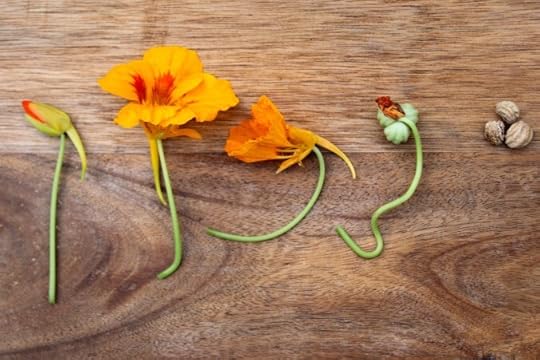
These cascading beauties seem to save their seeds until the end of the season. Seeds form in groups of 2-3 and are attached well to the stem. They are tasty as immature green seeds and make a fun alternative to capers.
But these seeds need to ripen fully and fall off on their own to have the best germination rates. So my practice is to wait until mid-September, then start lifting the mass of blooms and vines up off the ground and picking up the fallen seeds. They look like dried up, wrinkly little brains (as my schoolyard garden kids call out year after year). Make sure these are fully dry before sealing them up.
Seeds viable for 2-5 years
Poppies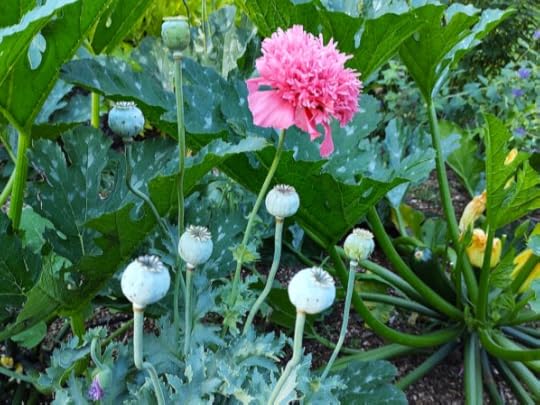
Most poppies are late spring or early summer bloomers, so they mature much earlier in the season, around the end of July. The seed pods are often saved for dry flower decorations as they are so stunning on their own. To harvest seeds, wait until pods are dry and you can hear the seeds shaking around inside. Then either cut or pull up the stem and tip upside down into a bag or bucket and shake.
These black seeds are so tiny they can escape many hand-folded seed envelopes, so be forewarned!
Seeds viable for 4-6 years
Snap Dragon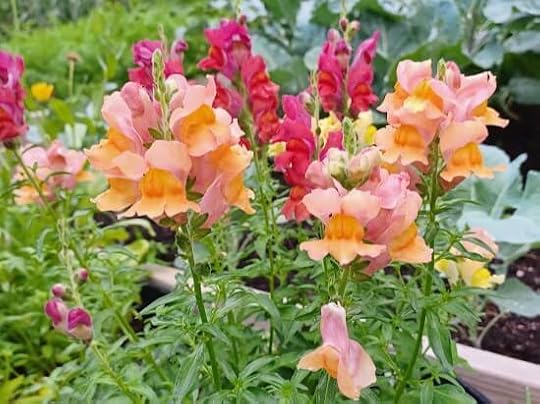
From watching bumblebee butts hang out the back while they’re slurping to the crazy skull like dried pods snap dragons offer a lot for any gardener. They bloom from the bottom to the top of their stems. So the lower seed pods will dry before the tops are ready.
Wait for (at least some of) the seed pods to completely dry on the stalk. Cut off individual seed heads or the whole stem directly into a brown paper bag or bucket. Then gently shake the tiny black seeds free from the rather skull like seed pods.
Seed viable for 3-5 years
Tithonia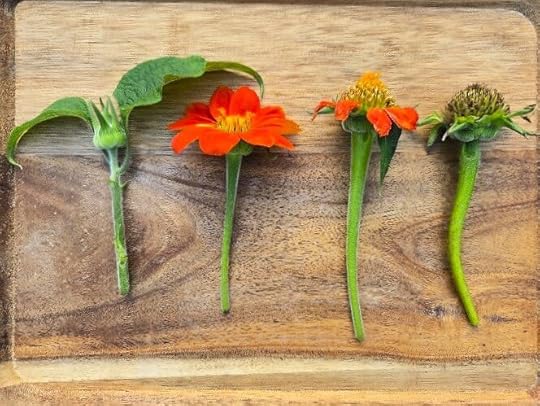
Tithonia (aka Mexican Sunflower) is one of those plants that impresses me every year. They often grow 6-7 feet tall and produce so many large branches laden with blooms that the bees and butterflies love late in the season. These are another flower that do best when the seeds are left to dry fully on the plant.
I snip just below the base of the flowers and drop directly into a brown paper bag. If you plan on handling these at all consider gloves as they are sharp! Shake the bag to help release the seeds from the heads. The seeds themselves resemble little gray arrowheads.
Viable for 2-4 years
Zinnia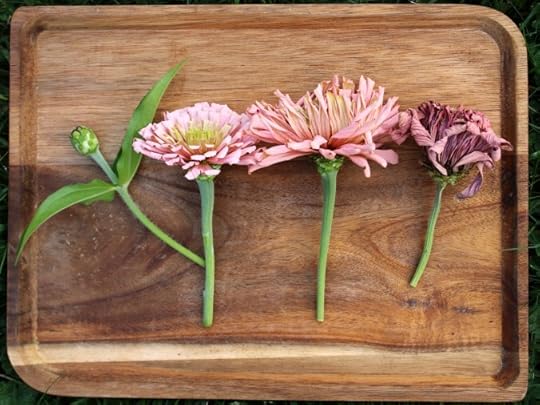
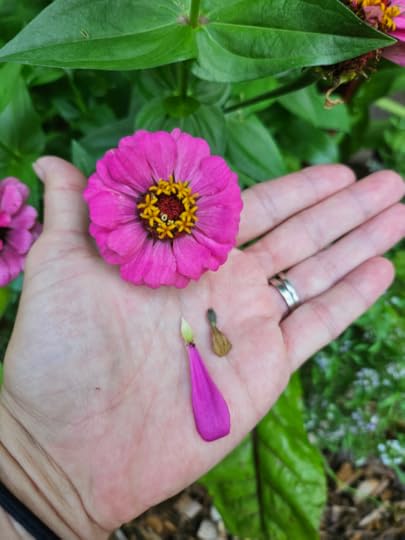
With zinnias you can have your bouquet and save seeds too! As long as the flowers are in full bloom when you cut them, you can enjoy them as cut flowers and then as they fade, remove from water, rinse and hang to dry- and still have great germination rates. I actually find this works better than leaving the flower heads in the garden to mature, because so many birds pick at the flowers and seed heads.
Gently tug from the base of the blooms to separate seeds. I usually hold the flowers upside down for this. You can keep the petals intact or break off depending on your preference.
They won’t always bloom true to color, but tend to stay in the same shades, shapes and sizes from what I have saved and regrown.
Viable for 3 to 5 years
Storing SeedsMake sure seeds are 100% dry before storing in either paper envelopes or an air tight container. I opt for paper envelopes and keep them inside a loose metal tin, in a cool and dry part of my home.
With each flower seed saved you’re adding to the story and resiliency of your garden, and saving money too!
What flower seeds do you want to save first?
Dig into Seed Saving,
Michelle
The post Seed Saving: Annual Flowers appeared first on Forks in the Dirt.
Forks in the Dirt
- Michelle Bruhn's profile
- 4 followers



